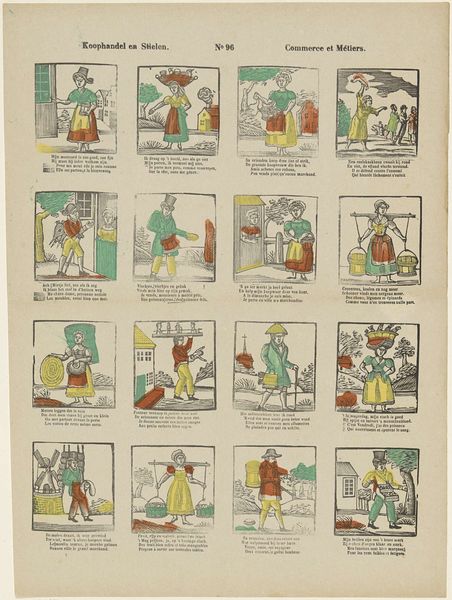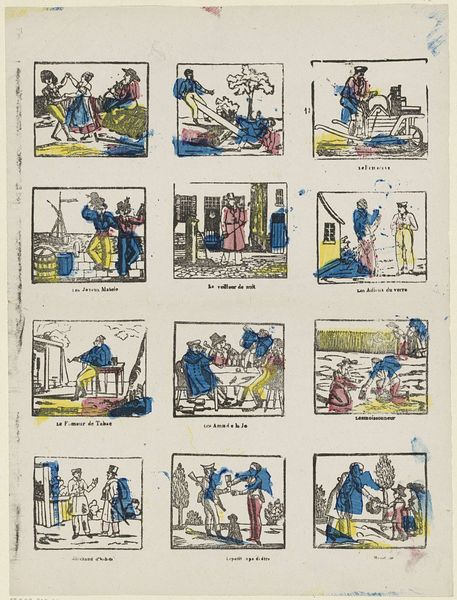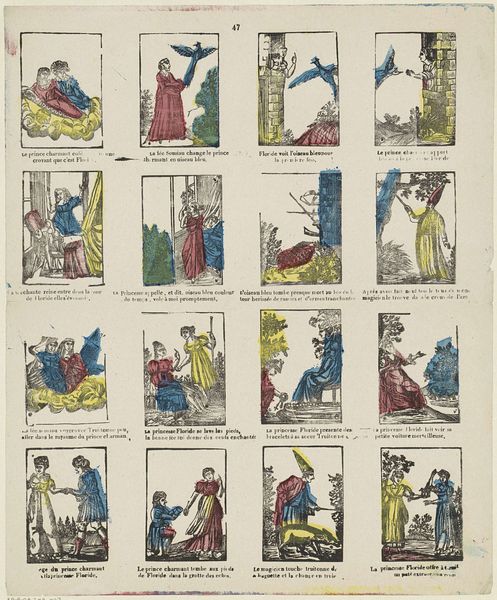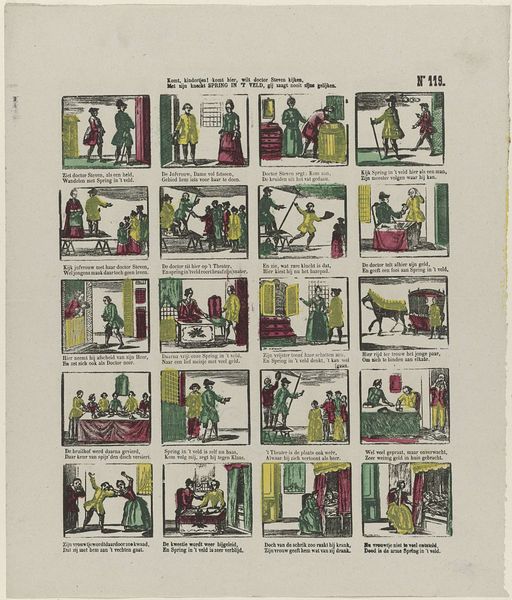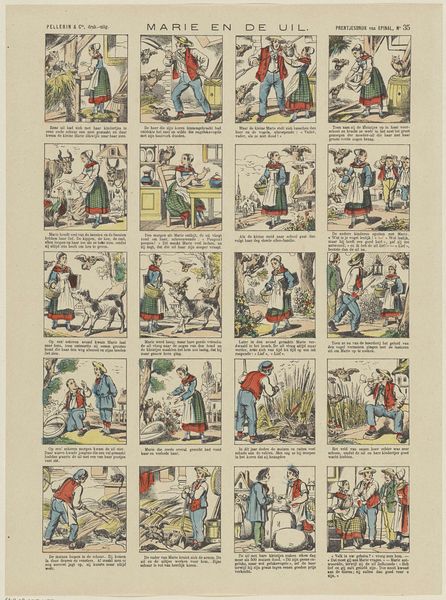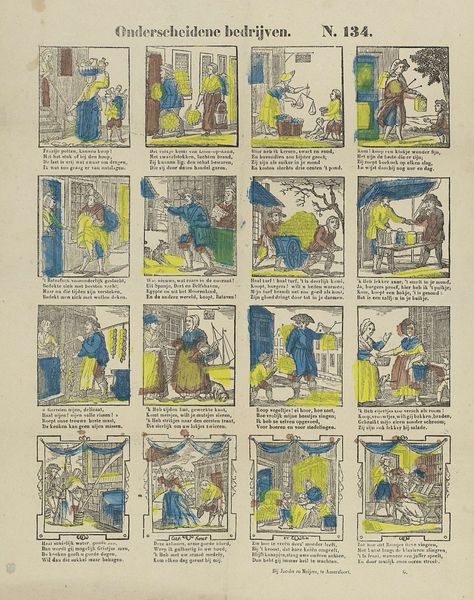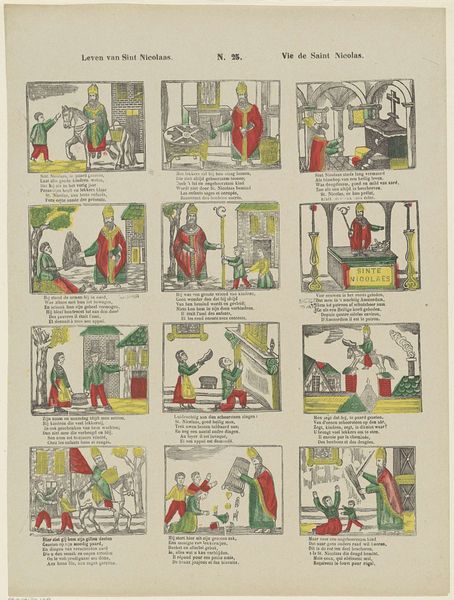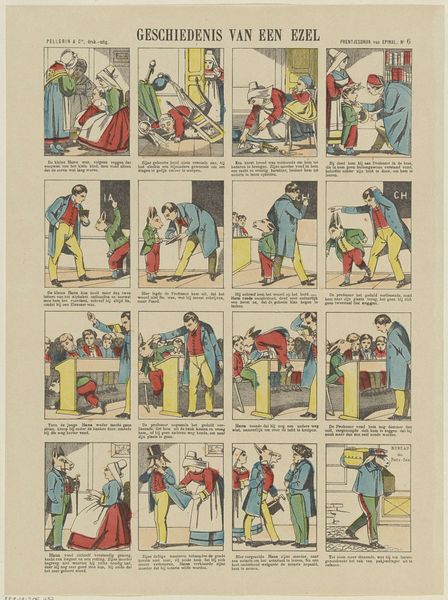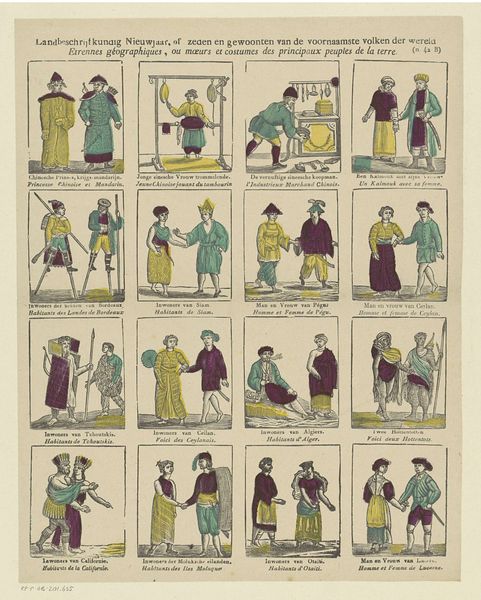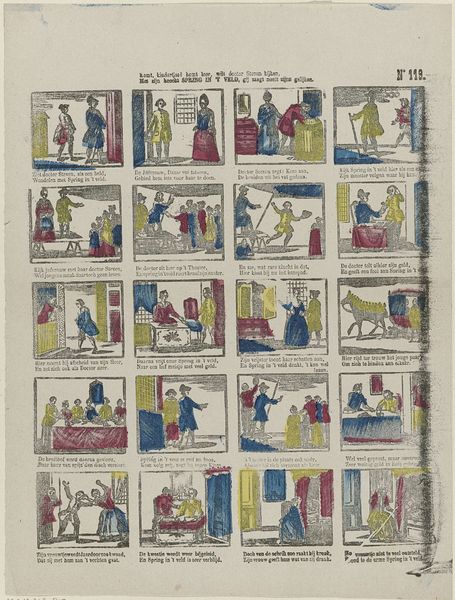
Leer uit deez' prentjes, jeugd, de lieve deugd betrachten, / En schuw wat, zelfs in 't minst, aen pligt en vroomheid schaedt; / Dan hebt gy, op deze aerd' steeds menschenmin te wachten, / En hierna 't heerlykst loon by God, uw toeverlaet 1833 - 1900
0:00
0:00
graphic-art, print
#
graphic-art
#
comic strip sketch
#
narrative-art
#
comic strip
# print
#
old engraving style
#
cartoon sketch
#
comic
#
genre-painting
Dimensions: height 401 mm, width 326 mm
Copyright: Rijks Museum: Open Domain
Curator: This piece, likely created between 1833 and 1900, is a print entitled "Leer uit deez' prentjes, jeugd, de lieve deugd betrachten, / En schuw wat, zelfs in 't minst, aen pligt en vroomheid schaedt; / Dan hebt gy, op deze aerd' steeds menschenmin te wachten, / En hierna 't heerlykst loon by God, uw toeverlaet" attributed to Glenisson & Zonen. It's an early example of a comic strip, if you will. Editor: Immediately, I see a series of small, narrative scenes laid out almost like a grid. There’s a certain quaintness to it. I wonder how the style and materials factored into its original reception. Curator: Well, the means of production are significant here. As a print, it suggests reproducibility and a wider audience. Consider the labour involved in creating the printing plates and the consumption of such imagery within bourgeois Dutch society of that time. Didactic comics instructing young people about good virtue and proper behaviour speak volumes about how they are raised to integrate into society. Editor: Precisely. This artwork appears as a reflection of bourgeois values around the late 19th century, designed to instil morals. There’s this emphasis on “plicht en vroomheid"—duty and piety—hinting at the social and religious frameworks that dictated acceptable behavior, especially for children. These visual stories would act as a moral compass within that context. We may also consider that as an emerging capitalist economy generated ever greater differences of wealth, promoting notions of shared ethical behaviour and shared accountability of this type were attempts to reinforce a faltering status quo. Curator: Yes! Also consider the colors themselves. They seem somewhat limited, possibly due to the printing process of the time, the availability of pigments, or even a stylistic choice to mimic earlier, less 'refined' forms of popular imagery. Each element serves to guide the audience. Editor: Absolutely, the limitation of color adds to its straightforward accessibility, creating an unambiguous delivery of intended morals to the contemporary Dutch. It invites reflection of social conditioning; not just in what these children are taught, but *how*. Curator: It's interesting how the combination of text and image works together in shaping perspectives of right and wrong. This has me considering the intended viewer’s literacy level as well as disposable income, which suggests class biases regarding the accessibility and purpose of the print. Editor: Viewing it now, we glean historical insights, prompting us to assess continuities and deviations from contemporary practices and social concerns; truly enriching! Curator: I'll certainly look more closely at the social and technological means of this piece's creation, as this comic may illuminate so much more regarding 19th-century visual culture.
Comments
No comments
Be the first to comment and join the conversation on the ultimate creative platform.
